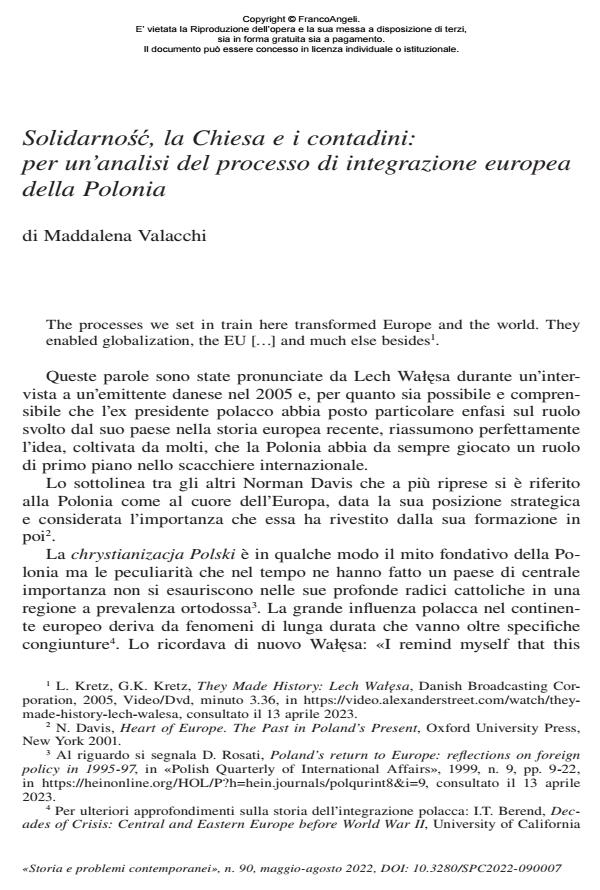Solidarnosc, la Chiesa e i contadini: per un’analisi del processo di integrazione europea della Polonia
Titolo Rivista STORIA E PROBLEMI CONTEMPORANEI
Autori/Curatori Maddalena Valacchi
Anno di pubblicazione 2023 Fascicolo 2022/90
Lingua Italiano Numero pagine 22 P. 100-121 Dimensione file 183 KB
DOI 10.3280/SPC2022-090007
Il DOI è il codice a barre della proprietà intellettuale: per saperne di più
clicca qui
Qui sotto puoi vedere in anteprima la prima pagina di questo articolo.
Se questo articolo ti interessa, lo puoi acquistare (e scaricare in formato pdf) seguendo le facili indicazioni per acquistare il download credit. Acquista Download Credits per scaricare questo Articolo in formato PDF

FrancoAngeli è membro della Publishers International Linking Association, Inc (PILA)associazione indipendente e non profit per facilitare (attraverso i servizi tecnologici implementati da CrossRef.org) l’accesso degli studiosi ai contenuti digitali nelle pubblicazioni professionali e scientifiche
This work aims to analyze all the steps, the main players and the reasons that pushed Poland towards the European membership after 1989. In this frame, and trough a comparative analysis of the available bibliography and archival sources, the author has studied the role of the Solidarity movement, the Catholic Church and the rural population. The path of each one of these fundamental actors and the relationships developed among them have been deepened in order to evaluate their specific role in the construction of the European Union.
Parole chiave:European Union, Cold War, solidarity, Poland, farmers, Catholic Church
Maddalena Valacchi, Solidarnosc, la Chiesa e i contadini: per un’analisi del processo di integrazione europea della Polonia in "STORIA E PROBLEMI CONTEMPORANEI" 90/2022, pp 100-121, DOI: 10.3280/SPC2022-090007